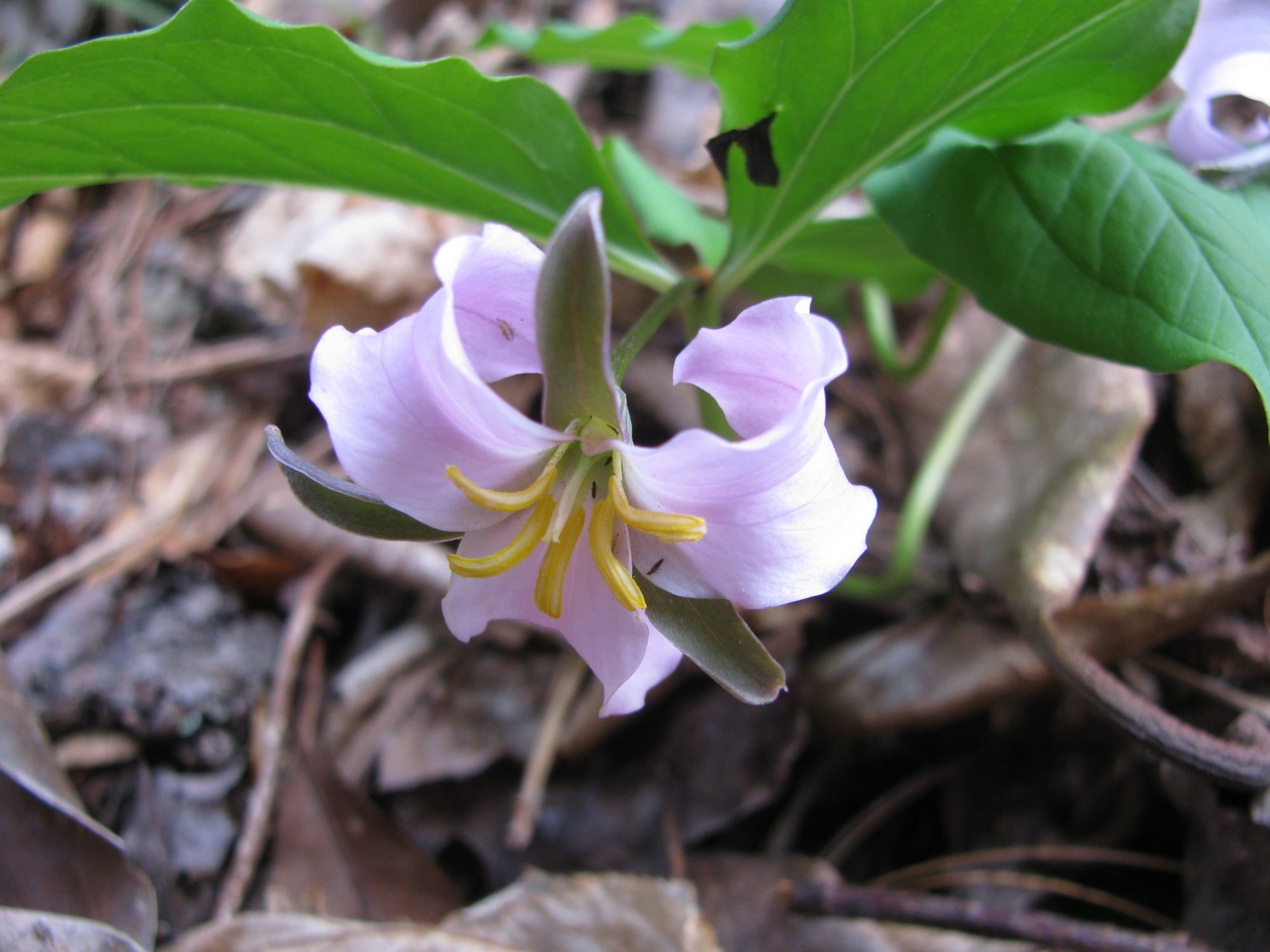One of my friends wanted to find the unusual Catesby’s trillium (Trillium catesbaei) while we were in the Smokies. So we got a tip from the ranger on which trail would be best and started hiking. I checked online for the correct characteristics: three “leaves” (bracts) for the Melanthiaceae (trillium family), drooping blooms and recurved petals for Catesby’s trillium (US Forest Service Wildflowers: Trillium catesbaei).
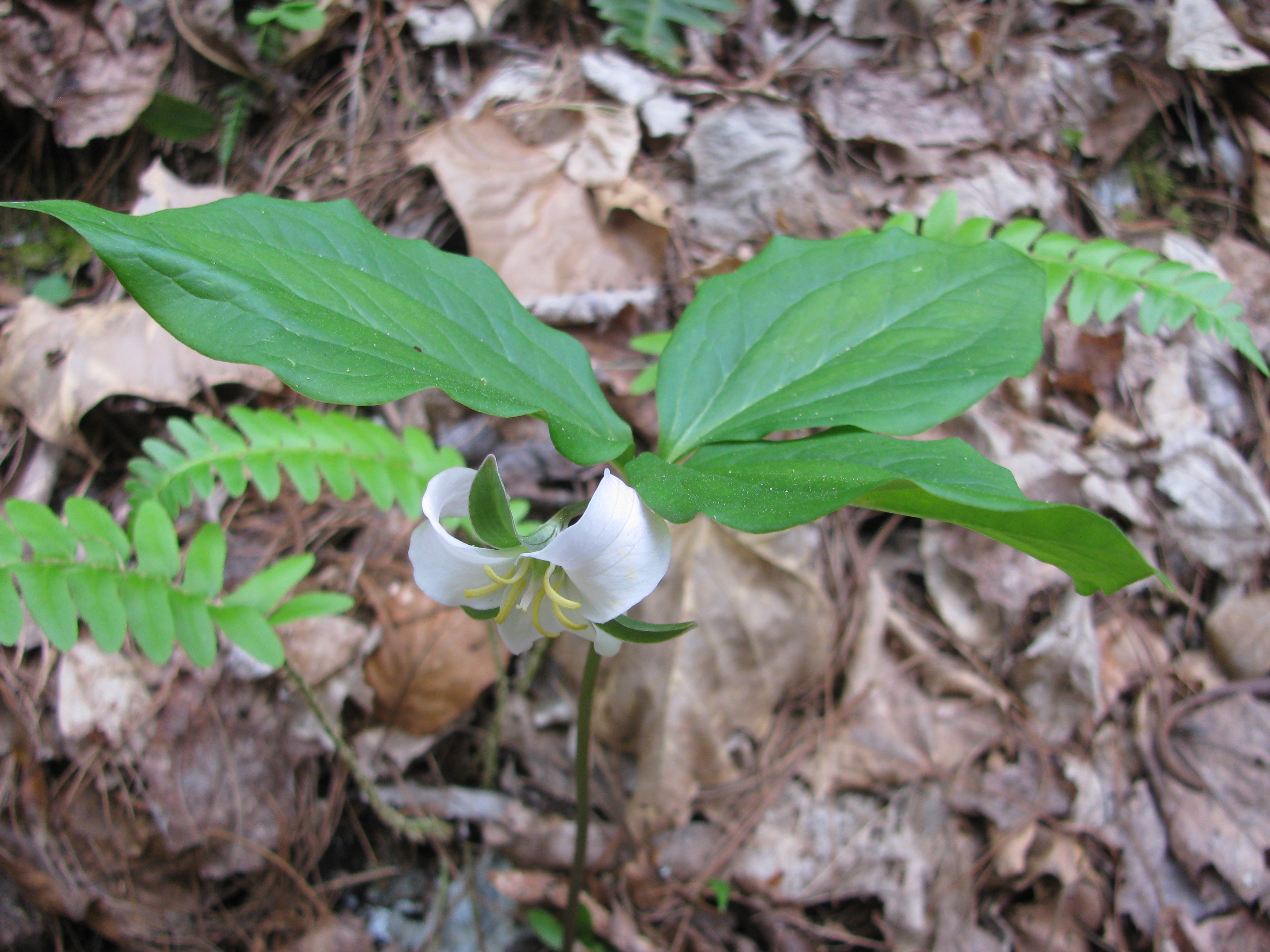
You can see the trilliums’ three bracts (since they are attached to the flowering stem, they are bracts, not leaves) and the dropping flower of a Catesby’s trillium. You can also see how the petals curve back towards the stem (Trillium catesbaei, Melanthiaceae)
We started hiking down a gentle slope along a stream and I kept my eyes out for the triple bracts. I was surprised to find a Catesby’s trillium fairly quickly. Then I saw another and another! During the whole hike, the only trilliums I saw were Catesby’s trilliums. It reminds of a common refrain for plants: they can be regionally rare but locally abundant. Catesby’s trillium is only found in seven counties in Tennessee, and in five states in total (Alabama, Georgia, North Carolina, South Carolina and Tennessee) (University of Tennessee Herbarium: Trillium catesbaei; US Forest Service Wildflowers: Trillium catesbaei).
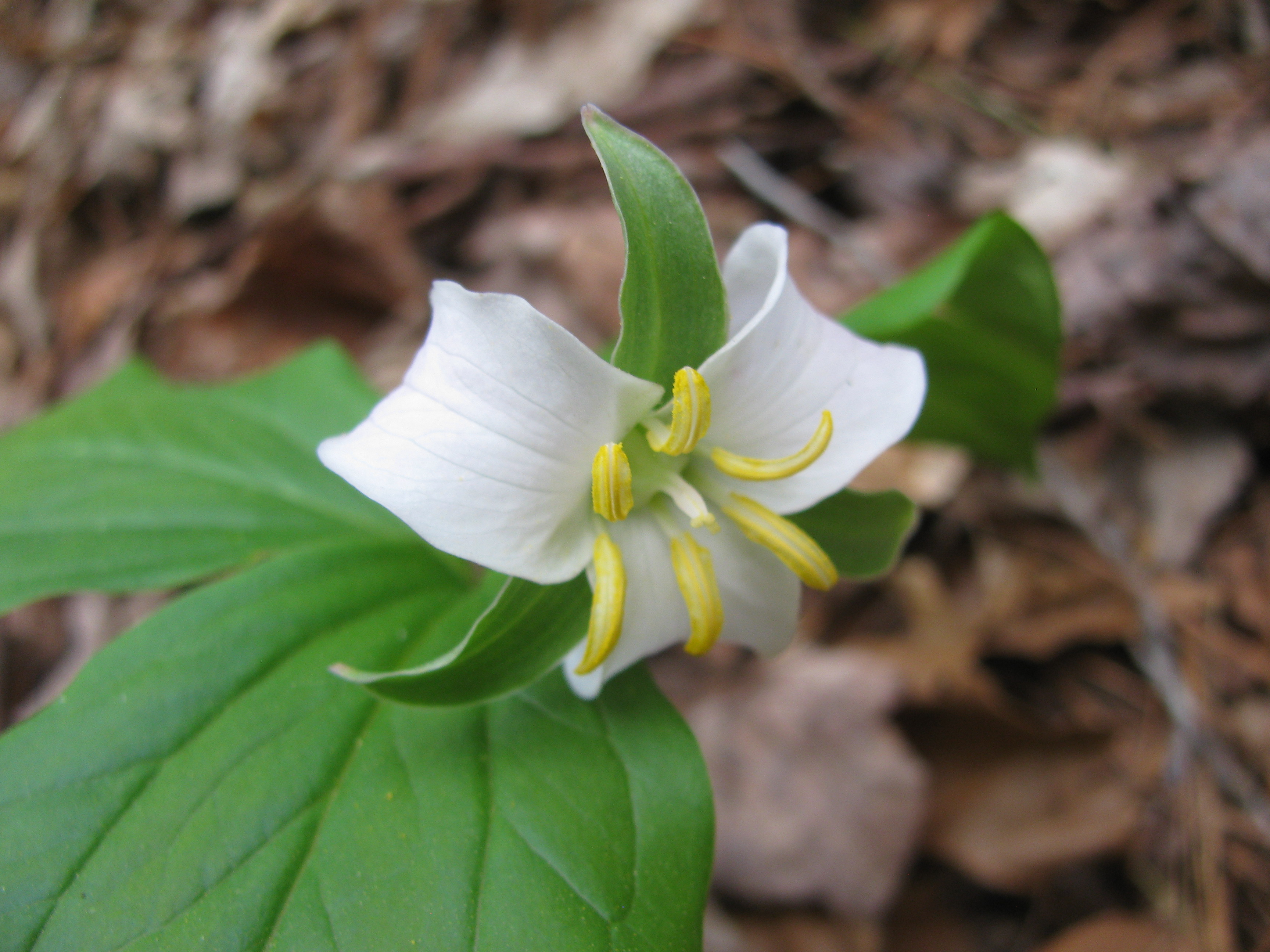
Young flowers of Catesby’s trillium have white petals. As the flowers age, the petals become more pink (Trillium catesbaei, Melanthiaceae)
Catesby’s trilliums have nodding white to pink flowers with bright ‘egg-yolk’ yellow anthers. This distinguishes them from the white form of the southern dropping trillium (Trillium rugelii) that have reddish anthers. The bracts of a Catesby’s trillium roll inward along the edges and they are found in drier habitats (US Forest Service Wildflowers: Trillium catesbaei).
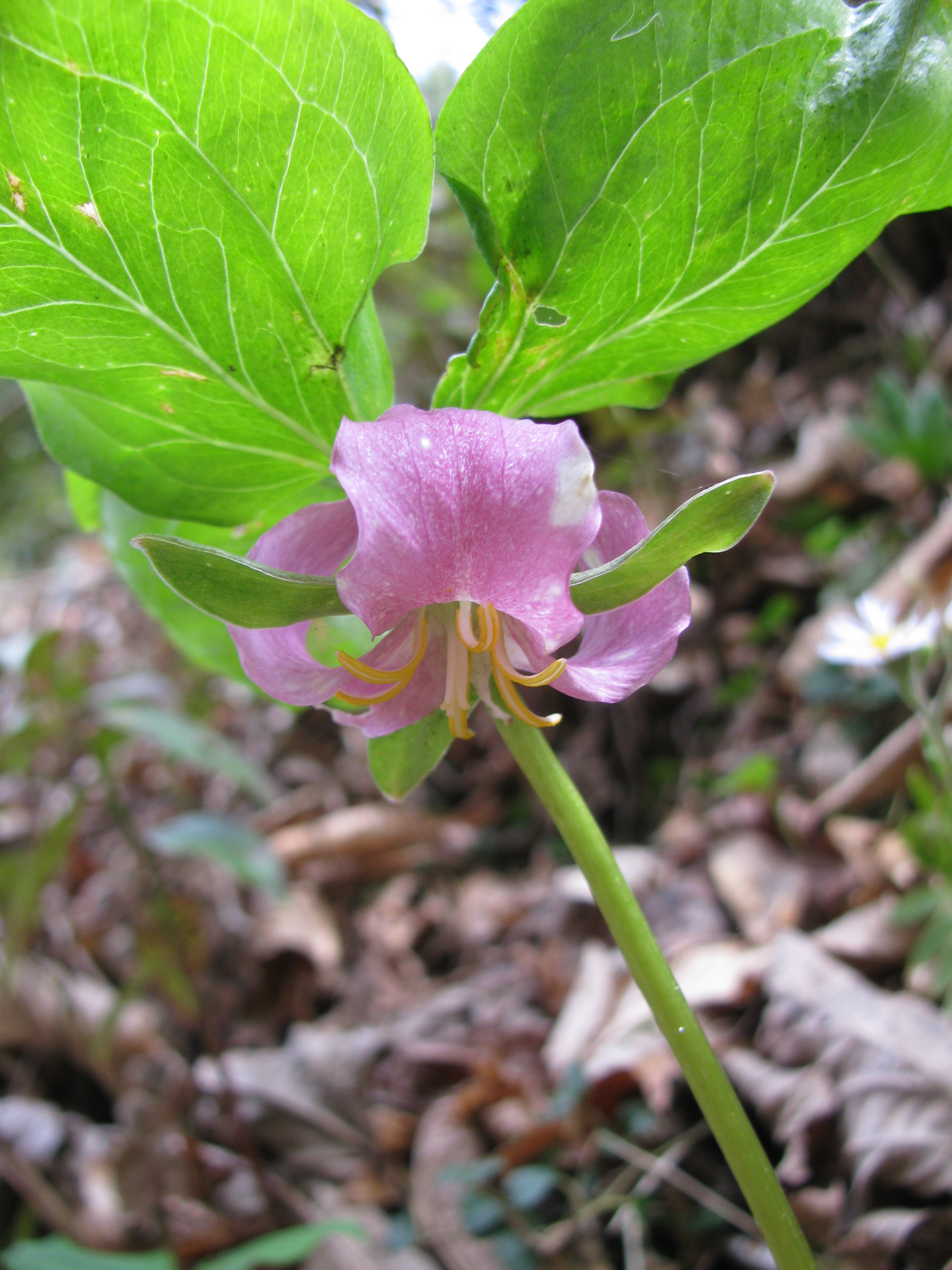
This older flower has bright yellow anthers and pink petals. You can also see the inward rolled edge of the bracts (Trillium catesbaei, Melanthiaceae)
Catesby’s trillium is named after Mark Catesby, an 18th century British explorer who described many plants and animals in the Eastern US. He was one of the first to produce books that had plants and animals depicted in their natural settings (Mark Catesby’s New World, The Smithsonian Magazine, 2008).
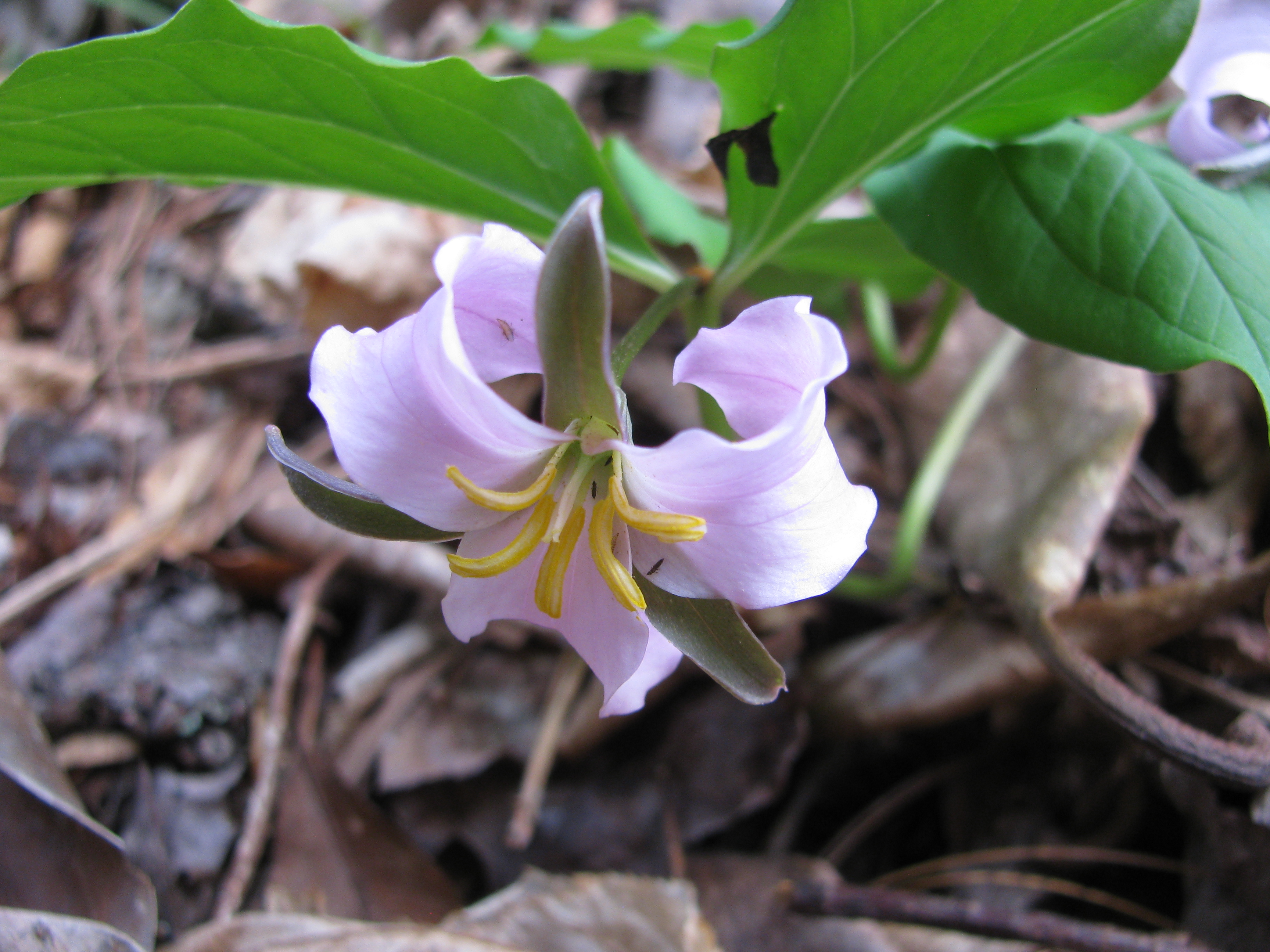
A middle-age flower with some tiny pollinators (Trillium catesbaei, Melanthiaceae)
